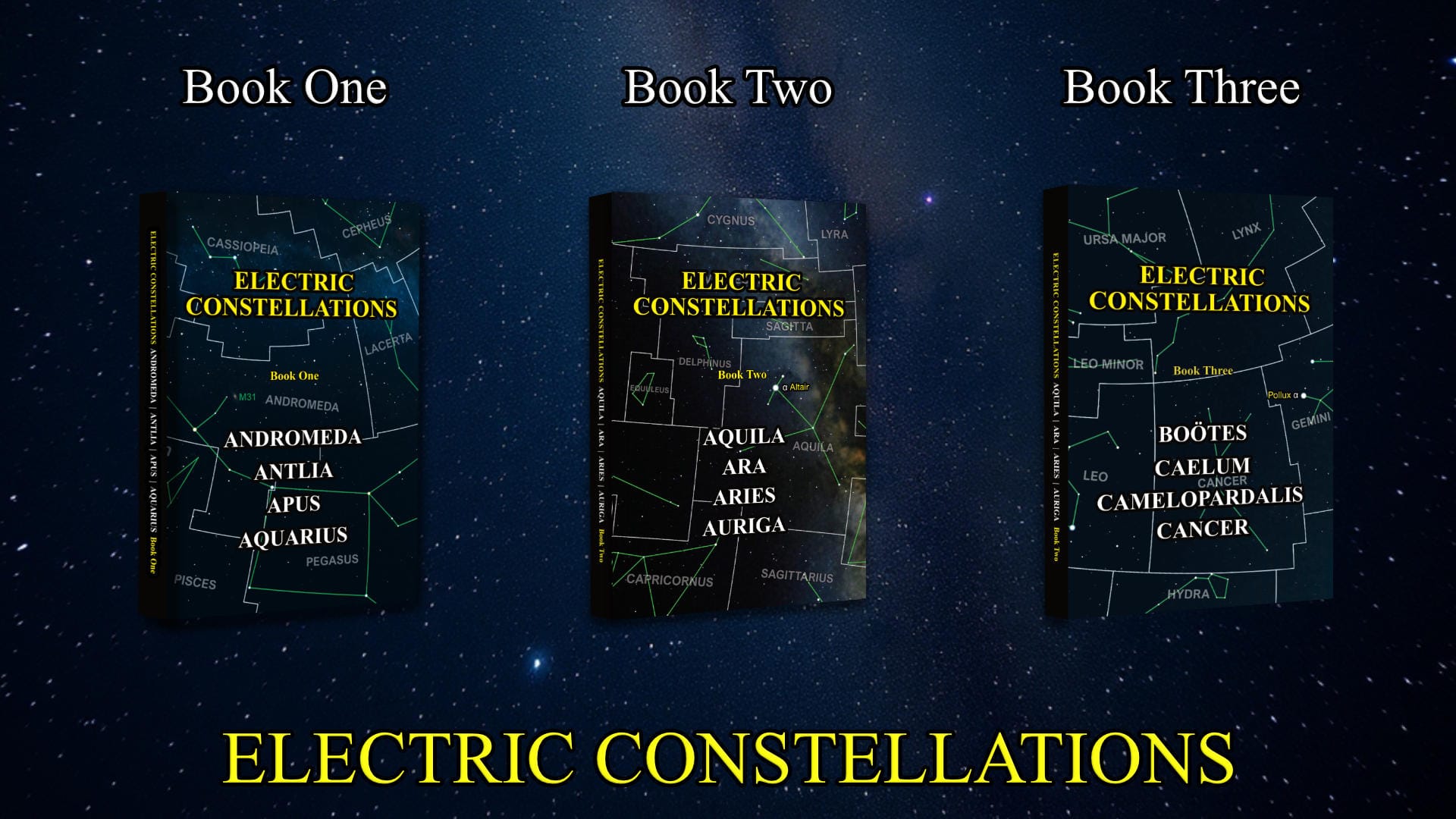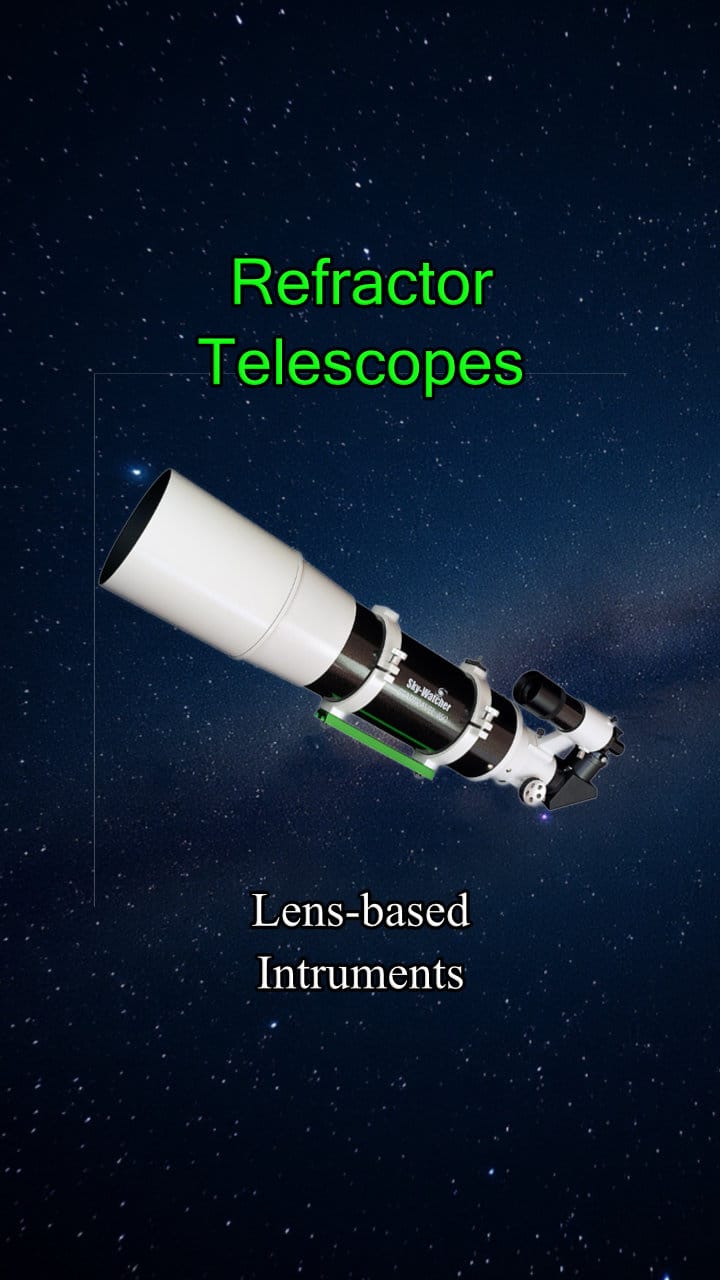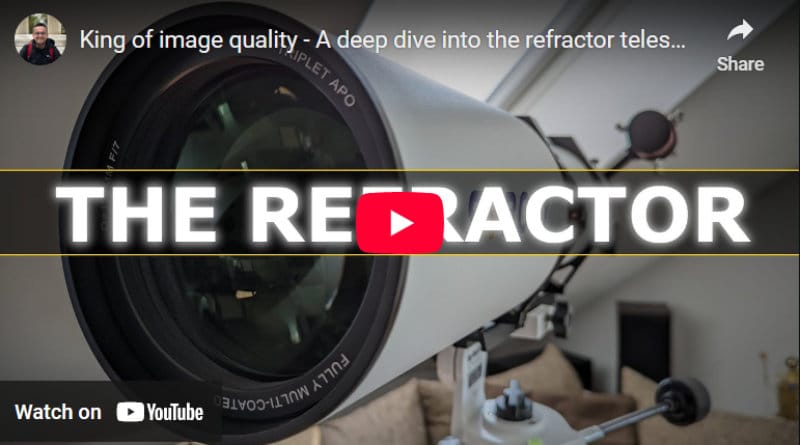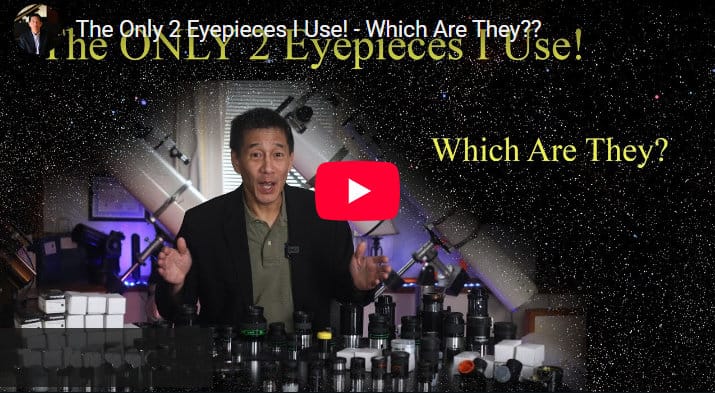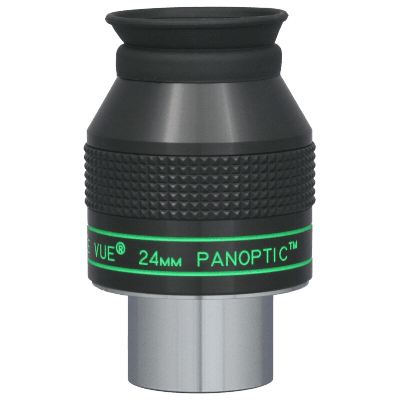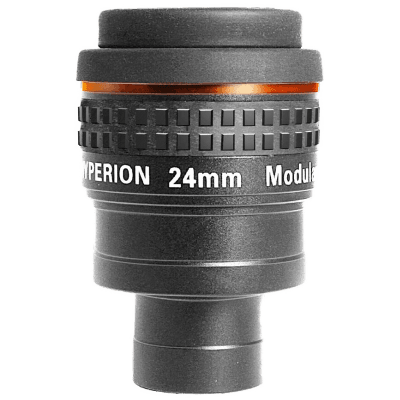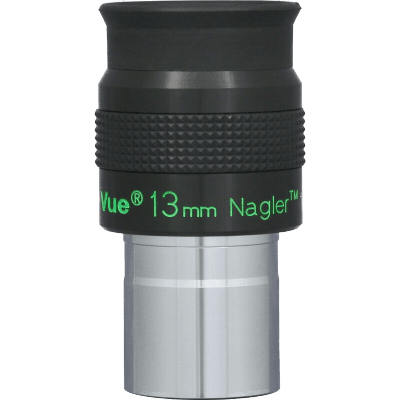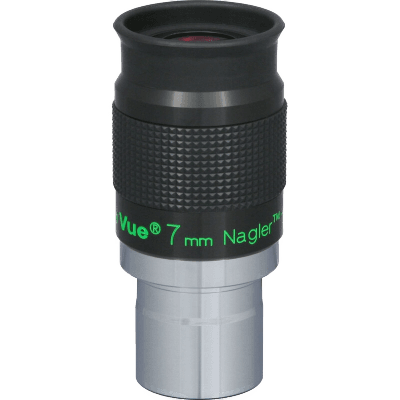Refractors
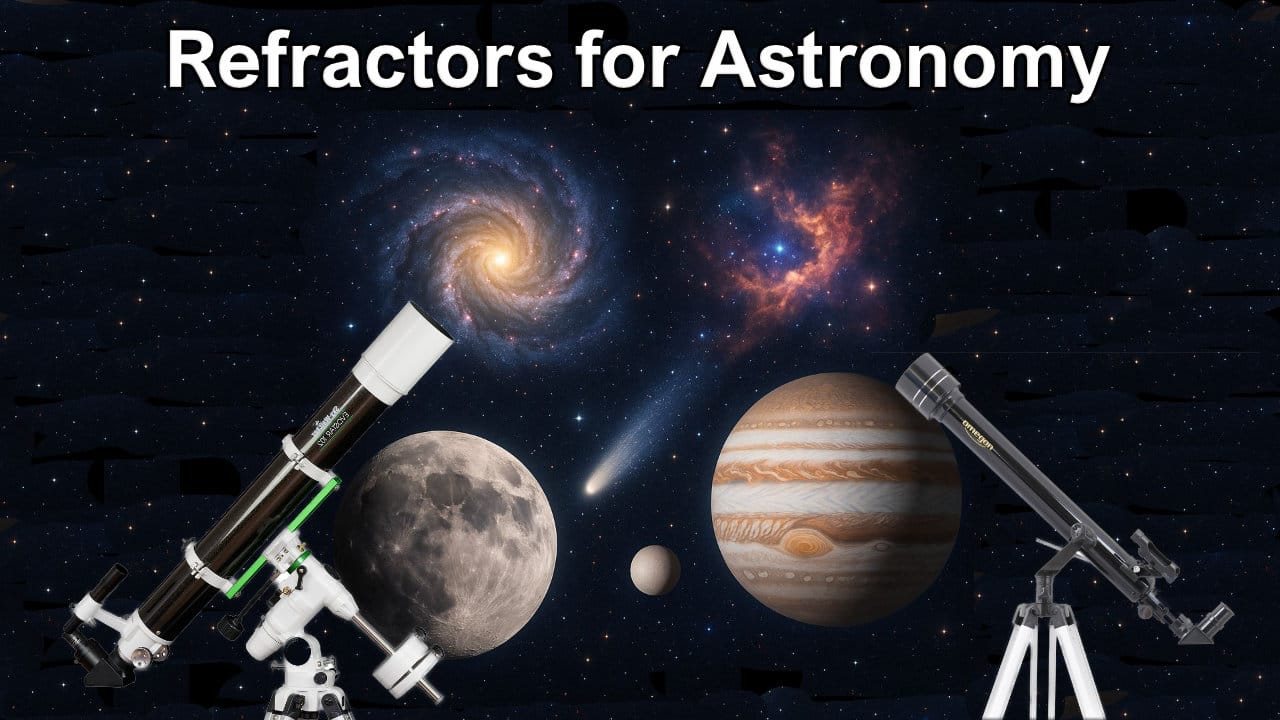
Refractors Use Lenses, Not Mirrors
- Refractors provide exceptional clarity and contrast for celestial viewing, making them ideal for lunar, planetary, and double star observations.
- The optimal refractor telescope aperture for beginners ranges from 70mm to 100mm, balancing light-gathering ability with portability and cost.
- Apochromatic (APO) refractors offer superior color correction compared to achromatic models, but come at a significantly higher price point.
- Quality glass coatings dramatically improve image brightness and clarity, with fully multi-coated optics being the gold standard.
- The telescope mount is just as important as the optical tube – a stable platform prevents frustrating vibrations that can ruin the viewing experience.
Peering through a quality refractor telescope for the first time can be a transformative experience. That moment when Saturn’s rings snap into crisp focus or the Moon’s craters reveal their ancient textures often ignites a lifelong passion for stargazing. The refractor telescope, with its straightforward design and reliable performance, has introduced countless astronomers to the wonders of the night sky. While technology has evolved dramatically since Galileo first pointed his rudimentary refractor skyward in 1609, the fundamental principles remain unchanged – and remarkably effective for certain astronomical targets.
This comprehensive guide will help you navigate the sometimes confusing world of refractors, whether you’re purchasing your first instrument or looking to upgrade. We’ll explore the science behind these elegant optical systems, identify the most crucial features to consider, and recommend specific models that deliver exceptional performance for their price.
Refractors: The Stargazer’s First Choice
Refractor telescopes earned their reputation as excellent first instruments for several compelling reasons. Their sealed optical tubes require virtually no maintenance, making them truly grab-and-go instruments that don’t need time-consuming adjustments before each session. This simplicity allows beginners to focus on exploring the sky rather than fiddling with equipment.
The optical design of refractors produces high-contrast images with excellent resolution, making them particularly adept at revealing fine details on planets, splitting close double stars, and showcasing the Moon’s intricate surface features. Unlike reflector telescopes that use mirrors, refractors employ lenses that don’t deteriorate over time, providing decades of consistent performance with proper care.
- Maintenance-free design ideal for beginners
- Superior contrast for planetary and lunar viewing
- Long-lasting optics that maintain collimation
- Compact size in smaller apertures
- Closed tube prevents dust contamination
Refractors do have limitations worth considering. They typically cost more per inch of aperture than reflector designs, and larger refractors can become prohibitively expensive. Chromatic aberration - the colored fringing sometimes visible around bright objects - can affect image quality in less expensive models. However, for many astronomical targets, a quality refractor in the 70-100mm range provides spectacular views that will satisfy for years.
Understanding Refractor Telescope Technology
The magic of a refractor telescope happens through a deceptively simple process. Unlike reflectors that bounce light off mirrors, refractors bend (or refract) light through carefully shaped lenses to form an image. This fundamental difference creates distinct optical characteristics that influence what you’ll see through the eyepiece.
The front element, called the objective lens, gathers light from distant objects and focuses it to a point inside the tube. An eyepiece then magnifies this image for viewing. The quality of these optical elements, particularly the objective, largely determines the telescope’s performance and price.
How Refractors Capture Light
The objective lens serves as the telescope’s light-gathering engine. Its diameter (the aperture) determines how much light enters the system - a larger objective collects more light, revealing fainter objects and finer details. This makes aperture one of the most critical specifications when evaluating any telescope.
After light passes through the objective, it travels down the optical tube until it reaches focus. The distance from the objective to this focal point is called the focal length, which influences both the telescope’s physical size and its optical characteristics. Longer focal lengths typically provide higher magnification and narrower fields of view, making them excellent for planetary observation, while shorter focal lengths offer wider vistas suitable for large nebulae and star clusters.
The focal ratio (f/number) is simply the focal length divided by the aperture diameter. A high focal ratio (f/10 or above) generally provides sharper planetary images, while lower focal ratios (around f/5-f/7) excel at wide-field views. This is why you’ll often see refractors described with designations like “80mm f/5” or “100mm f/11” - these numbers immediately tell experienced astronomers about the telescope’s optical properties:
- Aperture determines light-gathering ability
- Focal length affects magnification and field of view
- Focal ratio indicates optical characteristics
- Higher focal ratios (f/10+) excel at planets and lunar details
- Lower focal ratios (f/5-f/7) provide wider views of deep-sky objects
Achromats vs. Apochromats
Achromatic refractors represent the classic, popular, modern lens telescope design. An achromat consists of not one but of two objective lenses, usually made of crown glass and flint glass, and has the effect of a positive and a negative lens:

Achromatic Lens
Apochromatic (APO) refractors use special glass and three or more elements to virtually eliminate color fringing. This system is an apochromat, while the two previous ones are known as semi-apochromats. It typically consists of three lenses. Chromatic aberration is completely corrected. For some time now, so-called super-apochromats have been appearing on the market. Achromats provide excellent value for lunar and planetary viewing.

Apochromatic Lens
These refractors consist of five different lens elements, usually arranged in two groups. The first group, consisting of three lenses, performs the same function as a triplet apochromat. The second group, consisting of two lenses, corrects field curvature to achieve perfect astrophotography.
Telescopes classed as apochromats with a doublet lens have a two-lens objective design. The classification no longer makes a distinction between semi-apochromats and two-lens apochromats. The second element is usually made of ED glass (Extra-Low Dispersion). However, minor chromatic aberrations are still visible, since only a triplet apochromat with a three-lens construction can completely correct them.
ED glass in semi-APO designs offers a middle ground between the two. APOs deliver superior performance for both visual use and astrophotography, but at premium prices.
The primary technical challenge for refractor designers has always been chromatic aberration - the inability of a simple lens to focus all colors of light at exactly the same point. This creates colored fringes around bright objects, particularly noticeable when viewing the Moon, bright planets, and double stars. Early telescopes suffered severely from this issue until the development of the achromatic design, which combines two lenses made of different types of glass.
Modern apochromatic refractors take this correction further by using exotic glass types like fluorite, ED (Extra-low Dispersion), or FPL53 elements. These materials, combined with sophisticated lens designs featuring three or more elements, virtually eliminate chromatic aberration. The result is breathtaking color-free views and pinpoint stars that have made APO refractors the gold standard for both visual astronomy and astrophotography.
Benefits of a Closed Tube System
The sealed design of refractor telescopes provides significant practical advantages over open-tube designs. Since the optical path is completely enclosed, dust, moisture, and air currents cannot interfere with the image quality. This sealed environment means refractors typically hold their optical alignment (collimation) indefinitely, eliminating the regular maintenance required by reflector telescopes. For observers in humid climates, this closed system also reduces dew formation on optical surfaces, allowing for longer observing sessions without interruption.
The lack of a central obstruction (unlike compound telescopes with secondary mirrors) means refractors deliver the highest theoretical contrast per inch of aperture. This unobstructed light path creates those crisp, high-definition views of planets and lunar features that refractors are famous for. While seemingly minor, this design aspect makes a noticeable difference when observing subtle details like Jupiter’s cloud bands or Mars’ polar caps.
VIDEO: King of image quality — a deep dive into the refractor telescope design
5 Key Features That Make or Break Refractors
Selecting the right refractor telescope involves understanding several critical specifications that determine its performance capabilities. While marketing materials often emphasize certain features over others, five key attributes significantly impact your viewing experience. Prioritizing these elements will help you make an informed decision and avoid expensive mistakes.
1. Aperture Size: Why Bigger Isn’t Always Better
Aperture represents the diameter of the main lens and determines how much light your telescope can collect. While larger apertures reveal fainter objects and finer details, the price of quality refractors increases dramatically with size due to the precision required in manufacturing larger lenses. For most beginners, a 70mm to 100mm aperture provides an excellent balance between light-gathering ability, portability, and cost. Beyond 100mm, refractors become substantially more expensive and heavier, often requiring more sophisticated mounts.
Consider that a quality 80mm apochromatic refractor will outperform a mediocre 120mm achromat on many targets, particularly planets and double stars, where contrast and resolution matter more than raw light-gathering power. For more information, you can check out the Top Refractor Telescopes to suit your needs. Remember that the best telescope is one you’ll actually use regularly, not necessarily the largest you can afford.
2. Focal Length and What It Means for Viewing
Focal length significantly impacts your telescope’s versatility and specialization. Longer focal lengths (typically 900mm and above) excel at high-magnification views of planets, lunar features, and double stars but provide narrower fields of view. Shorter focal lengths (400-800mm) offer wider views that showcase larger deep-sky objects like the Andromeda Galaxy or the Pleiades star cluster.
A telescope’s focal ratio (focal length divided by aperture) provides insight into its optical characteristics. Higher focal ratios (f/10-f/15) typically deliver sharper planetary images with less chromatic aberration in achromatic designs. Lower focal ratios (f/5-f/7) provide wider fields of view but may show more color fringing in budget refractors. For versatile all-around performance, many experienced observers recommend focal ratios between f/7 and f/10 for your first refractor.
Focal Ratio Quick Reference
f/5 to f/7: Wide field views, better for star clusters and larger nebulae
f/8 to f/10: Versatile performance, good balance for various targets
f/11 to f/15: Specialized for planetary and lunar observation
3. Glass Quality and Coatings of Refractors
Perhaps no factor impacts image quality more dramatically than the quality of the glass and coatings used in the optical system. Premium glass formulations like ED (Extra-low Dispersion) or FPL-53 significantly reduce chromatic aberration, resulting in sharper, more color-accurate images. The difference between standard glass and these specialized materials is immediately apparent when viewing bright objects like the Moon or planets.
FPL-53 is made by Ohara in Japan. This glass is used in ED carbon fiber APO astrographs. Chromatic aberration is the phenomenon of different colors focusing at different distances from the objective lens.
When comparing specifications, terms like “coated,” “fully coated,” “multi-coated,” and “fully multi-coated” indicate increasing levels of optical quality and performance. The difference between a coated and fully multi-coated telescope can be as dramatic as a 15-20% increase in light transmission - a significant advantage for astronomical observation.
4. Mount Stability: The Unsung Hero
Even the finest refractor telescope will deliver disappointing results if paired with an inadequate mount. Stability is paramount in astronomical observation, as even tiny vibrations are magnified along with the image. A general rule suggests that your mount should be rated for at least twice the weight of your complete telescope setup to provide sufficient stability.
For refractors, two mount styles predominate: altitude-azimuth (alt-az) and equatorial. Alt-az mounts move up-down and left-right, making them intuitive for beginners but requiring constant two-axis adjustments to track celestial objects. Equatorial mounts align with Earth’s axis, allowing single-axis tracking of stars as they move across the sky - a significant advantage for higher magnifications.
Many quality starter packages include sturdy alt-az mounts that suffice for casual observation. As you progress, consider investing in either a solid equatorial mount or a computerized tracking mount that automatically follows celestial objects. The stability of your mount directly impacts your viewing experience more than many beginners realize.
5. Portability Considerations
The world’s best telescope offers little value if it remains in storage due to setup complexity or transportation difficulties. Refractors generally excel in portability compared to equivalent-aperture reflectors, but significant variations exist between models. Consider not just the weight of the optical tube, but the entire setup, including mount, tripod, and accessories.
For urban astronomers who need to travel to darker sites, a grab-and-go refractor under 10-15 pounds total weight offers tremendous advantages. Those with permanent setups or observatory spaces can prioritize optical performance over portability. Remember that the frequency of use typically decreases as setup complexity increases, especially for beginners.
Many experienced astronomers eventually acquire multiple instruments – perhaps a premium APO refractor for detailed lunar and planetary work, and a larger aperture Dobsonian reflector for deep-sky observation. This approach allows specialization without compromising on either portability or performance.
Best Refractors for Newcomers
Selecting your first refractor telescope requires balancing quality, performance, and budget. While hundreds of models crowd the market, certain refractors consistently deliver exceptional experiences for newcomers to astronomy. These recommendations focus on instruments that provide genuine astronomical capability rather than the disappointment often associated with department store telescopes.
Budget-Friendly Options Under $300
In the entry-level category, several refractors offer remarkable performance without breaking the bank. The SkyWatcher Mercury 705 AZ3 (70mm aperture) provides a complete package including a stable mount and quality eyepieces for around $200. With its 700mm focal length (f/10), it delivers impressive lunar and planetary views while remaining portable enough for frequent use.
The slightly larger Celestron Inspire 80AZ offers increased light-gathering ability with its 80mm aperture while maintaining excellent build quality and including thoughtful accessories like a smartphone adapter for basic astrophotography.
For those seeking maximum aperture in this price range, the Meade Infinity 102mm Refractor deserves consideration. Its larger objective lens gathers substantially more light than 70mm models, revealing fainter deep-sky objects, though its achromatic design will show some color fringing around bright targets. At this price point, all refractors use achromatic designs, so expect some chromatic aberration, particularly at higher magnifications.
- SkyWatcher Mercury 705 AZ3: Excellent first telescope with quality optics and a stable mount.
- Celestron Inspire 70AZ and the Celestron Inspire 100AZ: Great balance of aperture and features with smartphone adapter.
- Meade's Infinity series telescopes, such as the Meade Infinity AC 70, are ideal for anyone looking for an inexpensive introduction to astronomy.
- Explore Scientific FirstLight AR80: Quality optics with twilight nanofocus for precise adjustments
Mid-Range Models Worth the Investment
As your budget approaches $500-800, significantly better optical quality becomes available. The Explore Scientific ED80 Essential Series stands out in this category, offering a genuine ED (Extra-low Dispersion) glass objective that dramatically reduces chromatic aberration compared to standard achromats. This 80mm f/6 refractor provides versatile performance for both planetary and deep-sky viewing, with optical quality that will satisfy for many years.
The Sky-Watcher EvoStar 100ED represents another excellent mid-range option, offering additional light-gathering capability with its 100mm aperture while maintaining good color correction through ED glass. For those prioritizing wide-field views of star clusters and nebulae, the William Optics ZenithStar 61 provides exceptional optical quality in an ultra-portable package, with premium features like a two-speed focuser normally found only on much more expensive telescopes.
In this price range, consider purchasing just the optical tube if you already own a suitable mount, as this allows you to allocate more budget toward optical quality. Many mid-range refractors also serve as excellent platforms for beginning astrophotography, offering versatility that entry-level models cannot match.
What to Avoid in Your First Purchase
The telescope market, unfortunately, includes many instruments that deliver frustration rather than inspiration. Avoid packages that emphasize extreme magnification claims (like “675x power!”), These typically indicate poor optical quality being masked by marketing hype. Quality refractors typically ship with one, two, or three eyepieces providing reasonable magnifications between 20x and 150x, not the unrealistic 500x+ advertised on department store models.
Be wary of extremely short focal ratio achromatic refractors (f/5 or less) unless they utilize ED glass, as these invariably suffer from severe chromatic aberration. Similarly, extremely lightweight mounts with thin tripod legs rarely provide the stability necessary for satisfying views at anything beyond low magnification. If the entire telescope package weighs less than 8-10 pounds, the mount likely lacks sufficient rigidity for serious astronomical use.
Finally, consider the manufacturer’s reputation and support. Established brands like Sky-Watcher, Celestron, Explore Scientific, and William Optics maintain replacement parts inventories and provide customer service that can prove invaluable when issues arise. The minor price premium for these trusted brands typically represents excellent value compared to the frustration of dealing with an unresponsive manufacturer.
Spectacular Objects to Target with Your Refractor
Refractor telescopes excel at revealing specific types of celestial objects, and understanding these strengths helps set appropriate expectations for your observing sessions. While no single telescope type excels at everything, refractors offer spectacular views of several astronomical targets that consistently impress both beginners and experienced observers alike.
Lunar Landscapes in Stunning Detail
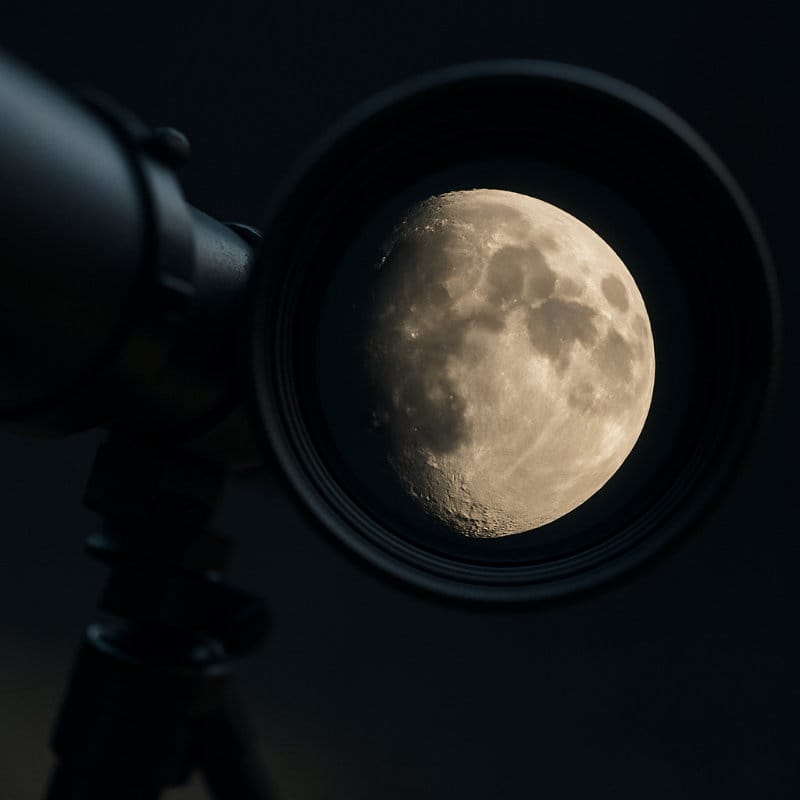
The Moon represents perhaps the perfect target for refractor telescopes, with its bright surface providing ample light for high-magnification views. Even modest 70mm refractors reveal hundreds of craters, mountain ranges, and rilles along the terminator (the line separating lunar day and night). As the terminator moves across the lunar surface throughout the monthly cycle, different features catch dramatic shadows that bring the landscape into three-dimensional relief.
Focus your attention on features like the crater Tycho with its dramatic ray system, the Alpine Valley cutting through the lunar mountains, or the magnificent Copernicus crater with its terraced walls and central peaks. The Moon offers endless exploration opportunities regardless of your observing location, as its brightness easily overcomes light pollution that might hinder deep-sky observation.
For the best lunar views, use medium to high magnification (100-150x) and consider adding a neutral density or lunar filter to reduce glare, especially when observing the nearly-full Moon. The exceptional contrast provided by quality refractors reveals subtle details in lunar features that might be missed in other telescope designs.
Planetary Viewing: What to Expect
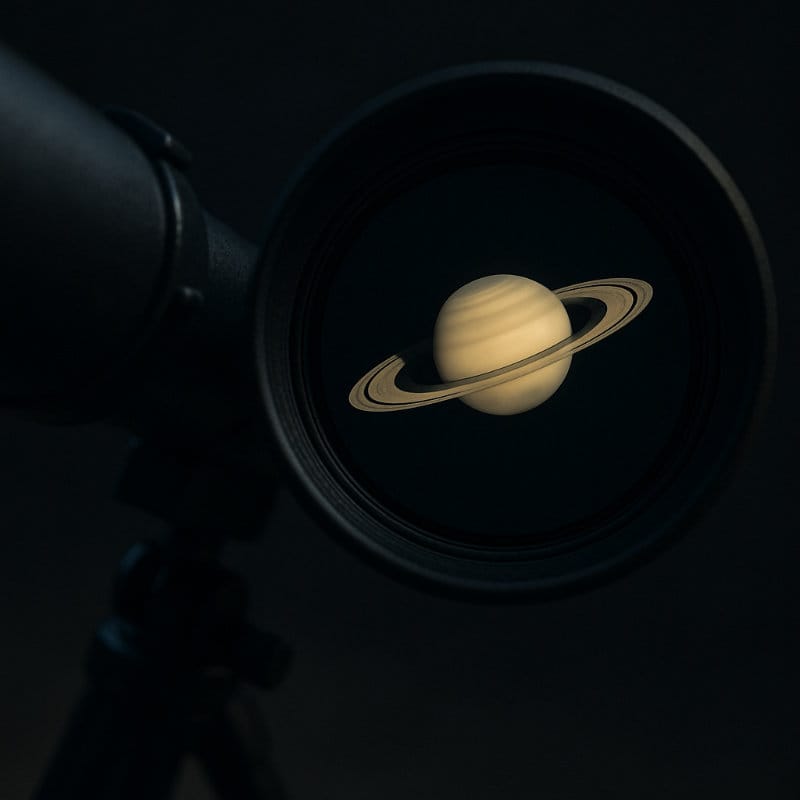
The planets present compelling targets for refractor telescopes, with each offering unique features visible through even modest instruments. Jupiter reveals its constantly changing cloud bands and four bright Galilean moons, which change position noticeably within a single evening. Saturn’s majestic ring system appears clearly defined in refractors of 80mm aperture or larger, while careful observation on steady nights may reveal the Cassini Division within the rings and several of Saturn’s brighter moons.
Mars presents a greater challenge, showing meaningful detail only around its biennial close approaches to Earth. During these favorable oppositions, refractors can reveal the polar ice caps and larger dark surface features. Venus, while showing no surface detail due to its complete cloud cover, displays fascinating crescent phases similar to the Moon as it orbits between Earth and the Sun.
For planetary observation, steady atmospheric conditions (good “seeing”) matter more than dark skies. The high contrast and sharp images provided by quality refractors make them particularly adept at revealing planetary details during those precious moments of atmospheric stability. Use magnifications between 100-200x for most planetary viewing, pushing higher only when atmospheric conditions permit.
Double Stars and Bright Deep-Sky Objects

Refractors excel at splitting double stars, where their precise star images and high contrast reveal close pairs that might appear blurred in other designs. Classic doubles like Albireo in Cygnus (showing stunning gold and blue components) or the challenging Epsilon Lyrae “Double-Double” provide satisfying targets that remain visible even from light-polluted locations. The clean star images produced by quality refractors also enhance views of magnificent open star clusters like the Pleiades (Messier 45) in Taurus and the Double Cluster in Perseus.
While large nebulae and galaxies generally benefit from the greater light-gathering capability of larger reflector telescopes, several bright deep-sky objects display beautifully through refractors. The Orion Nebula (Messier 42) reveals intricate gas tendrils and its embedded star cluster, while the Andromeda Galaxy (Messier 31) appears as a distinct oval glow with a brighter central core. From dark sky locations, refractors in the 80-100mm range can also show the Ring Nebula (Messier 57) in Lyra, the globular cluster Messier 13 in Hercules, and numerous other Messier objects.
For deep-sky observation, use low to medium magnification to maintain image brightness, and seek out dark sky locations whenever possible. Consider adding a light pollution filter if you regularly observe from urban or suburban areas, as these can significantly improve contrast on certain types of nebulae.
Essential Accessories for Refractor Owners
While a basic refractor package provides everything needed to begin exploring the night sky, several accessories can dramatically enhance your observing experience. Strategic upgrades often provide more significant improvements than purchasing a larger telescope, especially when selected to address specific observing interests.
Must-Have Eyepieces for Different Magnifications
Most refractors include one or two basic eyepieces that provide a starting point for observation, but a more complete eyepiece collection allows versatility across various targets. A low-power eyepiece (20-40mm focal length) provides wide-field views perfect for finding objects and observing large deep-sky targets. A medium-power option (10-15mm) offers general-purpose views suitable for lunar features and planetary observation. A high-power eyepiece (4-7mm) enables detailed planetary and double star observation under favorable conditions.
Quality matters significantly with eyepieces, as superior optical designs provide sharper images, better eye relief (the distance your eye can be from the eyepiece while seeing the full field), and more immersive viewing experiences. Modern designs like Plössl, wide-angle, and edge-corrected eyepieces offer significant advantages over the basic Modified Achromat eyepieces included with many telescope packages.
Consider investing in a zoom eyepiece (like the popular 8-24mm models) as a versatile option that provides continuous magnification adjustment without frequent eyepiece changes. While fixed focal length eyepieces typically provide slightly better optical performance, the convenience of a quality zoom eyepiece makes it a practical addition to any accessory case.
The Three Ideal Eyepieces To Use
TeleVue 24mm Panoptic 68° eyepiece
Panoptic eyepieces stand out as some of the finest performers available on today’s eyepiece market. With an impressive 68° apparent field of view, they open the door to breathtaking deep-sky experiences, allowing even large and extended celestial objects to be framed in their entirety. Their wide field is particularly advantageous for Dobsonian telescopes, where higher magnifications can be enjoyed without sacrificing a sense of spaciousness in the view.
Thanks to their carefully engineered design, the field can be taken in almost completely without shifting the eye, matching the natural 65° range of human vision. This creates an immersive and effortless observing experience that draws you into the night sky.
Positioned at a more accessible price point than Tele Vue’s Nagler and Ethos series, Panoptic eyepieces deliver exceptional performance without exceeding the budget. They provide razor-sharp, high-contrast images even in fast Newtonian telescopes as quick as f/5—proof of their outstanding optical quality. Many observers describe the overall sharpness as nothing short of sensational.
With generous eye relief ranging from 13 to 27 mm, depending on focal length, most models can also be used comfortably while wearing glasses. Smooth handling and a relaxed viewing position further enhance the experience, ensuring that even beginners will find these eyepieces easy to use and a pleasure to observe with.
Panoptic eyepieces combine performance, comfort, and value in a way that makes them a trusted choice for amateur astronomers worldwide.
__________________________________________
Baader 24mm Hyperion 68° eyepiece
The Baader Hyperion eyepiece series sets a new benchmark for optical performance and versatility, combining outstanding image quality with innovative design features that appeal to both visual observers and astrophotographers.
With a 68° apparent field of view—considered physiologically optimal for the human eye—these eyepieces provide a truly immersive experience. The entire field remains comfortably visible, even with natural, involuntary head movements, allowing the observer to stay fully engaged in the view.
Engineered with eight precision-polished lens elements in five groups, the Hyperion delivers pin-sharp images across the entire field, with excellent color fidelity right to the edge. By using high-refractive index glass elements, Baader has minimized distortion and astigmatism, achieving one of the cleanest, most natural wide-field views available.
One of the defining features of the Hyperion line is its unique dual-use design: essentially two eyepieces in one. Used with the 2" barrel and without the negative achromat group, it functions as a low-power, wide-field eyepiece. Attach the 1.25" negative achromat group, and it reverts to its nominal focal length for higher magnification. This versatility makes it an outstanding value for any telescope setup.
Observers will also appreciate the viewing comfort. Thanks to its advanced optical design, the Hyperion avoids the “kidney-bean effect” common to many wide-field eyepieces, keeping the image stable and visible even with slight head movement. The short field stop position further enhances usability, while generous eye relief—combined with fold-down eyecups—ensures spectacle wearers can observe in comfort.
Beyond visual astronomy, the Hyperion series doubles as a highly capable tool for astrophotography. The removable eyecup can be replaced with an M43–T2 adapter, making it simple to attach DSLR and digital cameras. With the addition of various adapter rings, compatibility extends to video cameras, webcams, and virtually any camera with a front-thread connection. Furthermore, the focal length of each eyepiece can be customized using spacer rings, providing remarkable flexibility. Their carefully considered diameter also allows for seamless use in bino-viewers, further broadening their appeal.
The Baader Hyperion eyepieces offer an ideal blend of sharpness, versatility, and comfort—making them an exceptional choice for astronomers who want both premium performance and maximum adaptability in their observing and imaging sessions.
__________________________________________
TeleVue 13mm Nagler Type 6 eyepiece
The TeleVue Nagler series has long been regarded as a benchmark in premium eyepiece design, delivering the kind of immersive, “spacewalk” experience that revolutionized amateur astronomy. The 13mm Nagler Type 6 continues this tradition, combining wide-field performance with precision optics for breathtaking deep-sky observing.
With an expansive 82° apparent field of view, this eyepiece brings faint nebulae, galaxies, and star clusters to life—ideal for fast Newtonian systems and especially well-suited for Dobsonian telescopes. The wide field ensures extended viewing time before nudging the scope, making deep-sky sweeps both effortless and captivating.
Designed with seven lens elements and advanced multi-coatings, the 13mm Nagler provides exceptional sharpness and contrast right to the edge of the field. Its homofocal design ensures easy interchangeability with other Nagler Type 6 eyepieces, while the fold-down eyecup offers comfortable positioning. A standard filter thread adds further versatility for enhancing planetary and deep-sky detail.
At just 181 grams and 74 mm in length, the 13mm Nagler is compact and lightweight, balancing high performance with convenience. With 12 mm of eye relief, it offers comfortable viewing for most users, drawing you deep into the night sky with every glance.
Specifications:
- Focal length: 13 mm
- Apparent field of view: 82°
- Eye relief: 12 mm
- Optical design: 7 elements, multi-coated
- Connection: 1.25" barrel with filter thread
- Homofocal: Yes
- Eyecup: Fold-down
- Weight: 181 g
- Length: 74 mm
The TeleVue Nagler 13mm Type 6 is more than just an eyepiece—it’s a gateway to wide-field astronomy at its finest.
__________________________________________
TeleVue 7mm Nagler Type 6 eyepiece
The TeleVue 7mm Nagler Type 6 eyepiece has the following specifications:
- Focal length: 7 mm
- Apparent field of view: 82°
- Eye relief: 12 mm
- Optical design: 7 elements, multi-coated
- Connection: 1.25" barrel with filter thread
- Homofocal: Yes
- Eyecup: Fold-down
- Weight: 227 g
- Length: 86 mm
The difference in physical size and weight between the TeleVue Nagler 7mm Type 6 and the 13mm Type 6—despite both having 7 lens elements—comes down to optical design requirements, not simply lens count. Several factors can account for this:
Lens Curvature and Thickness: Shorter focal length eyepieces (like the 7mm) require stronger curvature of their lens elements to achieve the necessary magnification. Steeper curves typically demand thicker glass to maintain mechanical strength and optical stability, which naturally increases weight.
Glass Types and Element Size: Even with the same number of elements, the diameter and thickness of the lenses can differ. High-refractive-index glass or special formulations may be required in the 7mm to maintain TeleVue’s hallmark edge correction across an 82° field. These glass types can be denser, adding weight.
Spacing and Housing Requirements: The optical spacing between elements must be different for a 7mm compared to a 13mm. This can result in a slightly longer housing to accommodate the required air gaps and mechanical mounts, explaining the 12mm increase in length.
Eye Relief and Ergonomics: Both eyepieces are designed with a consistent 12 mm eye relief, regardless of focal length. Achieving the same usable eye relief in a shorter focal length eyepiece is optically more demanding, which may require extra housing space or thicker components to control aberrations and maintain comfort.
Mechanical Robustness: TeleVue often builds in a margin of mechanical durability. For the 7mm, the longer body and slightly heavier build may help ensure stability of the stronger-curved lenses and prevent alignment shifts under normal handling.
Filters That Transform Your Viewing Experience

Specialized filters can dramatically improve views of certain astronomical targets when used with refractors. A neutral density or lunar filter reduces the Moon’s overwhelming brightness, revealing additional surface detail, particularly near the full phase. Color filters (particularly yellow, orange, and blue) enhance subtle features in planetary atmospheres by improving contrast of specific details - yellow filters, for instance, make the Great Red Spot more prominent on Jupiter.
Light pollution filters help urban and suburban observers by selectively blocking artificial light wavelengths while transmitting those emitted by certain nebulae. While these cannot create truly dark skies, they can make the difference between seeing or missing objects like the Orion Nebula from moderately light-polluted locations. For serious deep-sky observation, however, there remains no substitute for traveling to truly dark sites.
Narrowband filters like OIII (Oxygen III) and H-beta target specific emission wavelengths from nebulae, dramatically improving contrast on objects like the Veil Nebula or Horsehead Nebula, though these specialized filters work best with larger apertures and truly dark skies. For most beginning refractor owners, a basic lunar filter and perhaps a light pollution reduction filter represent the most useful initial investments.
Star Diagonals and Their Importance
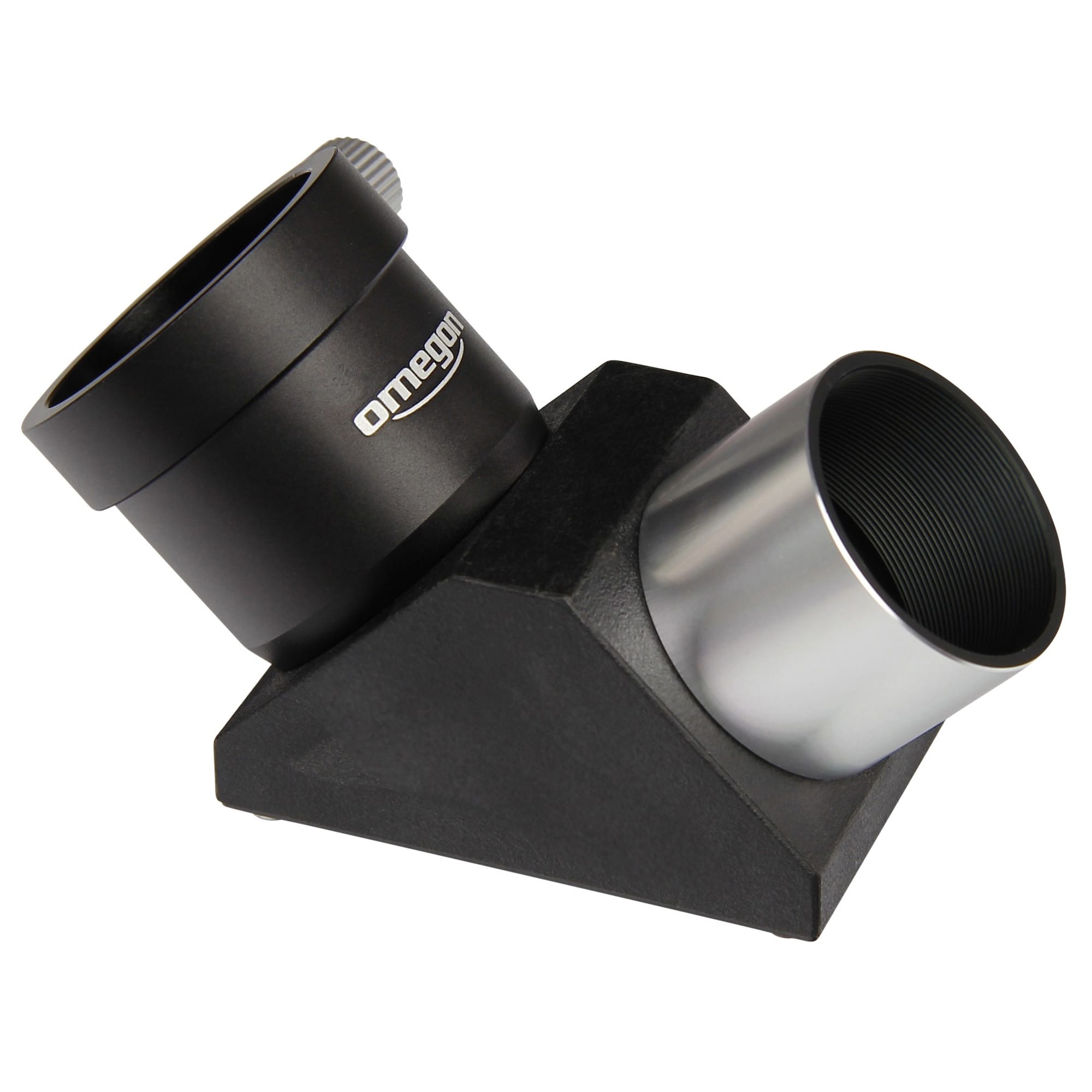
The star diagonal redirects light at a 90-degree angle, allowing comfortable viewing through a refractor telescope without awkward neck positions. While most refractors include a basic prism diagonal, upgrading to a higher-quality diagonal often provides noticeable image improvements. Dielectric diagonals offer superior reflectivity (typically 99% compared to 85-90% for basic models), resulting in brighter images with better contrast.
Consider upgrading to a 2-inch diagonal if your refractor accepts 2-inch accessories, as this allows the use of wider-field eyepieces that provide more immersive views of large objects like the Pleiades or Andromeda Galaxy. The increased light throughput and elimination of internal reflections in quality diagonals contribute significantly to overall image quality, making this one of the most impactful upgrades for refractor owners.
Cases and Dew Shields for Protection
Protecting your investment with proper storage and dew prevention accessories ensures years of trouble-free observation. A padded case designed specifically for your telescope model protects during transport and storage, preventing dust accumulation and accidental damage. For refractors used primarily at home, even a simple dust cover offers meaningful protection against contaminants that could eventually require professional cleaning.
Dew shields (also called dew caps or lens hoods) extend beyond the objective lens to prevent condensation from forming on optical surfaces during nighttime temperature drops. Beyond dew prevention, these accessories provide the additional benefit of reducing stray light, improving contrast when observing near streetlights or during bright moonlight. Most refractors include a basic dew shield, but longer extensions provide enhanced protection in humid conditions.
For observers in particularly damp climates, consider adding active dew prevention systems that use gentle heating elements to maintain optical surfaces slightly above the dew point temperature. While not essential for casual observation, these systems prove invaluable during extended imaging sessions or public outreach events where continuous operation is necessary.
Refractor Maintenance Made Simple
One of the greatest advantages of refractors is the minimal maintenance requirements compared to other designs. With proper care, a quality refractor can provide decades of service without significant degradation in optical performance. Understanding basic maintenance procedures helps preserve your instrument and ensures optimal viewing experiences.
Cleaning Optics Without Damage
The most important maintenance rule is paradoxically to clean optical surfaces as infrequently as possible. Most dust particles on lenses have minimal impact on image quality, while improper cleaning can cause permanent scratches that significantly degrade performance. When cleaning becomes necessary, start with a bulb blower (never compressed air) to remove loose particles without contact. For stubborn smudges, use optical cleaning solution and lens tissues specifically designed for coated optics, applying minimal pressure in a gentle circular motion from center to edge.
Always clean eyepieces more frequently than the objective lens, as they routinely collect eyelash oils and dust. The objective lens should rarely require cleaning beyond occasional dust removal with a blower. If significant cleaning becomes necessary, consider consulting a professional, as the multi-coated surfaces of quality refractor objectives can be damaged by improper techniques or materials.
Proper Storage Techniques
Store your refractor telescope in a clean, dry environment with relatively stable temperatures to prevent internal condensation cycles that can promote fungal growth on optical surfaces. While purpose-built cases provide ideal protection, even covering the telescope with a breathable cloth offers meaningful protection against dust accumulation. When storing for extended periods, leave dust caps slightly loose to allow air circulation while still protecting against larger contaminants.
For refractors with retractable dew shields, store the instrument with the shield extended to prevent dust from settling directly on the objective lens. Similarly, store eyepieces in their protective containers rather than leaving them installed in the focuser or diagonal. These simple habits significantly extend the interval between necessary cleaning procedures.
Dealing with Common Issues
Refractors occasionally develop sticky or rough focuser movement, particularly in humid environments or after periods of disuse. This can usually be resolved by carefully cleaning the focuser tubes with a lint-free cloth and applying a small amount of specialized focuser grease to the moving surfaces. Avoid household lubricants, as these can migrate to optical surfaces or attract additional dust. For telescopes with rack-and-pinion focusers, periodically check for looseness in the pinion gear and adjust the tension screws if necessary.
If internal dew forms inside the optical tube (appearing as fogging visible through the objective), move the telescope to a warm, dry environment and remove the dust caps to allow gradual evaporation. Avoid using heat sources to accelerate this process, as rapid temperature changes can stress optical elements. Persistent internal condensation might indicate seal issues that require professional attention to prevent potential fungal growth on internal optical surfaces.
Advancing Your Skills: Beyond Beginner Refractors
As your astronomical journey progresses, you’ll develop preferences for specific types of observation and perhaps encounter limitations in your initial equipment. Understanding the typical advancement path helps inform decisions about upgrades or complementary equipment that expands your observing capabilities without unnecessary duplication.
Progression Path for Many Amateur Astronomers
- Entry Level: 70-80mm achromatic refractor on alt-azimuth mount
- Intermediate: 80-100mm ED/APO refractor or 6-8” Dobsonian reflector
- Advanced: Multiple specialized instruments for different observing purposes
- Expert: Premium APO refractors, large Dobsonians, and advanced imaging setups
Many astronomers eventually develop a collection of instruments, each optimized for specific targets rather than seeking a single “do-everything” telescope. This approach acknowledges that different optical designs excel at different applications - refractors for high-contrast planetary viewing, Dobsonian reflectors for deep-sky observation, and specialized instruments for astrophotography or other specific interests.
Advancing in astronomy often involves developing specialized knowledge in particular areas that intrigue you personally. Whether your passion becomes lunar observation, double star splitting, deep-sky hunting, or astrophotography, allowing your interests to guide equipment decisions typically proves more satisfying than simply pursuing larger apertures without specific observational goals.
When to Upgrade Your Equipment
Consider upgrading when your current equipment consistently limits observation of targets that genuinely interest you, not simply because newer models become available. If you regularly observe planets but find chromatic aberration in your achromatic refractor distracting, upgrading to an ED or APO refractor represents a meaningful improvement. Similarly, if you’ve developed an interest in faint galaxies but struggle to see them in your 80mm refractor, a larger aperture Dobsonian might complement (not replace) your existing instrument.
Accessories often provide more cost-effective improvements than complete telescope upgrades. Quality eyepieces, better diagonals, and sturdy mounts frequently yield more significant observing improvements per dollar invested than pursuing slightly larger apertures. This is particularly true with refractors, where aperture increases come with substantial price premiums compared to reflector designs.
If you find yourself consistently using your telescope at its maximum useful magnification, struggling with a shaky mount, or unable to see targets of interest despite good technique, these suggest appropriate upgrade considerations. However, if your primary limitation is finding time to observe or developing skills to locate objects, these are better addressed through practice and planning rather than equipment changes.
Premium Apochromatic Options
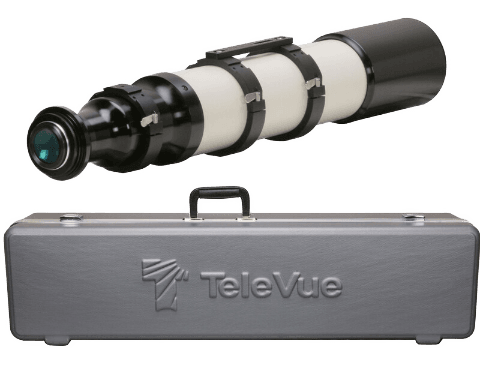
TeleVue 5-inch APO Astrograph Refractor
The pinnacle of refractor performance comes in premium apochromatic (APO) designs utilizing exotic glass types and sophisticated multi-element objectives. Manufacturers like TeleVue, Astro-Physics, Takahashi, and StellarVue represent the upper echelon of refractor quality, with prices reflecting their exceptional performance. These instruments typically feature oil-spaced triplet objectives using FPL-53 or fluorite elements, providing virtually perfect color correction and breathtaking image quality.
Combining with Astrophotography
Refractor telescopes offer several advantages for astronomical imaging that have made them the preferred choice for many astrophotographers. Their flat field characteristics (particularly in specialized “astrograph” designs) minimize star distortion across the image field, while their lack of central obstruction provides excellent contrast for planetary imaging. The fixed-lens design eliminates the collimation concerns that complicate imaging with reflector-based systems, resulting in consistently round, well-defined stars.
Your Journey Starts Here
Embarking on astronomical exploration with a quality refractor telescope opens a lifetime of discovery and wonder. From your first breathtaking view of Saturn’s rings to eventually splitting challenging double stars or photographing distant nebulae, these elegant instruments connect us directly with the cosmos in ways that catalogs and photographs simply cannot match. The simplicity, reliability, and optical excellence of refractors have introduced countless observers to the night sky, creating passionate amateur astronomers who continue exploring decades after that first inspirational view.
Remember that astronomy represents one of the few remaining sciences where amateurs routinely make meaningful contributions. Whether sharing views with neighbors during impromptu sidewalk sessions, participating in organized star parties, or eventually contributing observational data to research organizations, your refractor telescope serves as both a scientific instrument and a connection to a worldwide community of stargazers. Clear skies and spectacular views await as you begin or continue your astronomical journey with these remarkable instruments that have revealed cosmic wonders since Galileo’s pioneering observations over four centuries ago.
Often Asked Questions
How much should I spend on my first refractor telescope?
For your first refractor telescope, plan to invest between $250 and $500 for a quality instrument that will provide satisfying views and reliable performance. While entry-level models around $150-200 can provide enjoyable views of the Moon and brighter planets, they typically include lower-quality accessories and less stable mounts that may limit your observing experience. The sweet spot for beginners usually falls around $300-400, where instruments like the Sky-Watcher Mercury 707, Celestron Inspire 80AZ, or similar models offer good optical quality, reasonable accessories, and adequate mounts without overwhelming complexity.
Can refractors see deep sky objects like galaxies?
Yes, refractor telescopes can certainly show many deep sky objects, though their capabilities depend on aperture size, observing conditions, and experience level. From suburban locations, a quality 80mm refractor will reveal the Andromeda Galaxy (M31), brighter globular clusters like M13, and impressive nebulae like the Orion Nebula (M42). Many open star clusters appear particularly stunning through refractors, with pinpoint stars against dark backgrounds.
For fainter galaxies and nebulae, larger apertures and darker skies become increasingly important. While a 100mm refractor under truly dark skies can show dozens of galaxies to an experienced observer, the same instrument in light-polluted conditions might struggle with all but the brightest objects. For dedicated deep-sky observation, larger reflector telescopes typically offer better performance per dollar invested, though high-quality refractors maintain advantages in contrast and star image quality.
What’s the difference between achromatic and apochromatic refractors?
Achromatic refractors use a two-element objective lens design that reduces but doesn’t eliminate chromatic aberration (color fringing), particularly around bright objects like the Moon, planets, and brilliant stars. These more affordable instruments typically provide excellent views at moderate magnifications, though color fringing becomes more noticeable as magnification increases. Better achromats with higher focal ratios (f/10 or greater) show less chromatic aberration than shorter designs.
Apochromatic (APO) refractors employ special extra-low dispersion (ED) glass and more complex objectives with three or more elements to virtually eliminate chromatic aberration. This superior correction results in higher contrast, better color fidelity, and sharper images, particularly noticeable during planetary observation and astrophotography. The significant price premium for APO designs reflects both the exotic glass materials and the precision manufacturing required for these complex optical systems.
Do I need to collimate a refractor telescope?
Unlike reflector and compound telescopes that require periodic alignment (collimation) of their mirrors, refractors rarely need optical alignment after leaving the manufacturer. The fixed lens design provides exceptional stability, with alignment typically maintained indefinitely unless the telescope experiences significant physical impact. This set-it-and-forget-it characteristic represents one of the refractor’s greatest advantages for beginners and busy observers.
In rare cases where a refractor does require collimation due to manufacturing issues or damage, the process typically requires specialized tools and expertise beyond most amateur capabilities. Professional servicing is usually recommended rather than attempting DIY adjustments that might permanently compromise optical performance. Thankfully, the need for such service is exceedingly rare with quality refractor telescopes.
If you notice image quality issues with your refractor, first check for simpler explanations like poor seeing conditions, incorrect focus, or eyepiece problems before suspecting collimation issues. Atmospheric turbulence frequently causes image degradation mistakenly attributed to telescope problems, particularly during planetary observation.
Telescope Type | Collimation Frequency | Difficulty Level |
Refractor | Rarely or never needed | Professional service required |
Newtonian Reflector | Regular (often before each session) | Moderate, user-adjustable |
Schmidt-Cassegrain | Occasional | Simple to moderate, user-adjustable |
Which eyepieces work best with refractors?
Refractors generally perform excellently with a wide range of eyepiece designs, though several types offer particular advantages. Plössl eyepieces represent an excellent starting point, providing good eye relief, sharp images, and reasonable pricing. For wider fields of view, modern designs like wide-angle or “super-wide” eyepieces provide more immersive observing experiences, particularly useful for larger deep-sky objects. Premium eyepieces from manufacturers like TeleVue, Explore Scientific, and Baader offer noticeable improvements in edge sharpness, contrast, and eye comfort compared to basic models.
For high-magnification planetary viewing, orthoscopic and modern planetary designs often provide the sharpest images with minimal aberrations. Long eye relief designs like Tele Vue Delos or Pentax XW series offer particular advantages for eyeglass wearers, allowing the full field of view to remain visible without removing corrective lenses. Consider investing in a quality 2-inch diagonal and wide-field 2-inch eyepieces if your refractor accepts these larger accessories, as they provide dramatically improved views of larger objects compared to standard 1.25-inch eyepieces.
Rather than accumulating numerous similar eyepieces, consider building a collection that provides a logical progression of magnifications. Many experienced observers recommend approximately doubling the magnification between adjacent eyepieces (e.g., eyepieces providing 25x, 50x, 100x, and 200x) to offer meaningfully different views without unnecessary duplication. Remember that eyepiece investments typically retain their value across telescope upgrades, making quality eyepieces one of the most transferable and enduring astronomy investments you can make.
Challenge the standard model—explore the cosmos through the Electric Universe Theory. These Electric Constellations books contain full-color, data-rich investigations of four constellations each. They're not a beginner's star guide—they're a serious work for independent thinkers, astronomers, and scientifically literate readers seeking to understand the Universe beyond conventional gravity-based interpretations.
Each constellation is examined in detail, with attention to its Bayer-designated stars, mythological origins, meteor showers, and bordering constellations. In-depth profiles of deep-sky objects—including galaxies, planetary nebulae, and star clusters—are paired with high-resolution imagery from the Webb and Hubble space telescopes, delivering both scientific clarity and visual impact.
Central to this series is the Electric Universe (EU) model, which proposes that electromagnetic forces—not gravity alone—govern much of the structure and behavior of the cosmos. Rather than treating this as speculative fringe, the book frames the EU model as an evidence-based, plasma-physics-informed alternative to the standard cosmological narrative.
Inside each volume:
- Comprehensive coverage of four distinct constellations
- Analyses of deep-sky objects in the EU context
- Original commentary on plasma discharge features and Z-pinch configurations
- Mythological and historical context without romantic embellishment
Written for readers who demand more than rote repetition of gravitational dogma, Electric Constellations opens a new observational and theoretical frontier—where stars light by electrical currents, not fusion, and where structure emerges from plasma dynamics, not dark matter.
Whether you are an amateur astronomer, electrical engineer, or astrophysicist curious about alternative models, these books deliver a rigorous and visually stunning exploration of the night sky—illuminated by a very different current.
